When Donald Trump is inaugurated as president for the second time in January 2025, he will assume power over the regulation of a tech industry that’s changed significantly since his first term began in 2017. The tech industry’s honeymoon period with the US government has fizzled, and both Trump and his successor, President Joe Biden, took a skeptical stance toward tech CEOs, albeit for different reasons. Their antitrust enforcers initiated some of the first major anti-tech monopoly actions in decades.
Technology
Here’s a first look at Motorola’s next Razr foldable
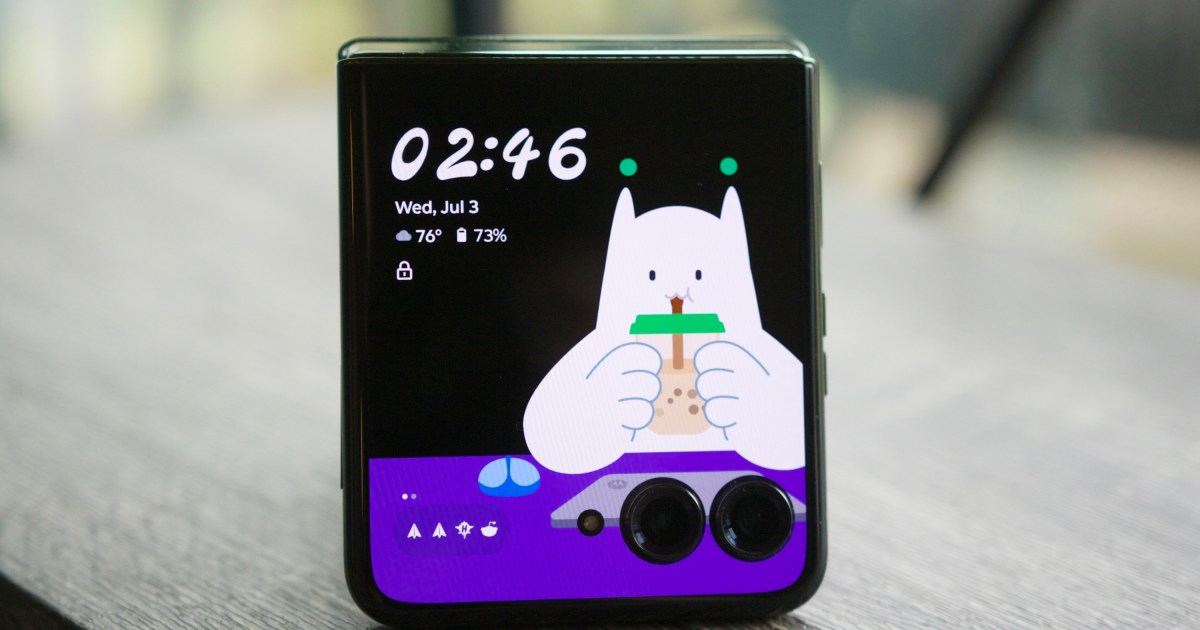
Were you considering Motorola’s Razr 2024 or Razr 2024 Plus but found the prices too high? You might be lucky, as more affordable versions could be released soon.
91Mobiles has discovered a listing for a new Motorola foldable device in the Wireless Power Consortium and SGS Fimko certifications. The Razr 50s Ultra may launch soon and be released alongside the previously rumored Razr 50s.
Given their names, the Razr 50s and Razr 50s Ultra are expected to be priced lower and have fewer features than the already released Razr 50 and Razr 50 Ultra, which were released in the U.S. as the Razr 2024 and Razr Plus 2024, respectively.
In addition to being listed on the WPC and SGS, the Razr 50s Ultra has also been spotted on the official Motorola U.S. website under the hearing aid compatibility section, with the model numbers XT2451-1 and XT2451-2.
According to 91mobile, the Razr 50s Ultras should look nearly identical to the Razr 50 Ultra. It appears to have a large flip-style foldable design, with a punch-hole cutout for the front-facing camera in the center. With narrow bezels throughout, the Razr 50s Ultra will likely feature a volume rocker and power button on the right edge with a SIM tray on the left side.
The back features a large secondary screen that occupies the upper part of the rear panel and extends to the hinge. Dual camera sensors and an LED flash are integrated into the screen. The lower portion of the back has a leather finish and displays the iconic Motorola dimple along with the Razr branding.

The Razr 2024 and Razr Plus 2024, respectively, are clamshell foldable smartphones in the U.S. They offer a modern take on the classic Razr design. The Razr Plus 2024 stands out with its larger 4-inch external display, which allows for more functionality when the phone is closed, such as replying to messages and using apps. It also boasts a flagship Snapdragon 8s Gen 3 processor, improved cameras (50MP main and 50MP telephoto), and faster 45W TurboPower charging.
In contrast, the Razr 2024 has a smaller 3.6-inch external display, a mid-range MediaTek Dimensity 7300X processor, a different camera setup (50MP main and 13MP ultrawide), and slightly slower 30W charging.
In the U.S., the Razr 2024 is priced at $700, while the Razr 2024 Plus starts at $1,000. It’s unknown what the Razr 50s and Razr 50s Ultra will be called in the U.S. or what their price points are, which should be lower than those of the previous models.
Technology
Amazon Games talks IP growth opportunities across five generations of gamers
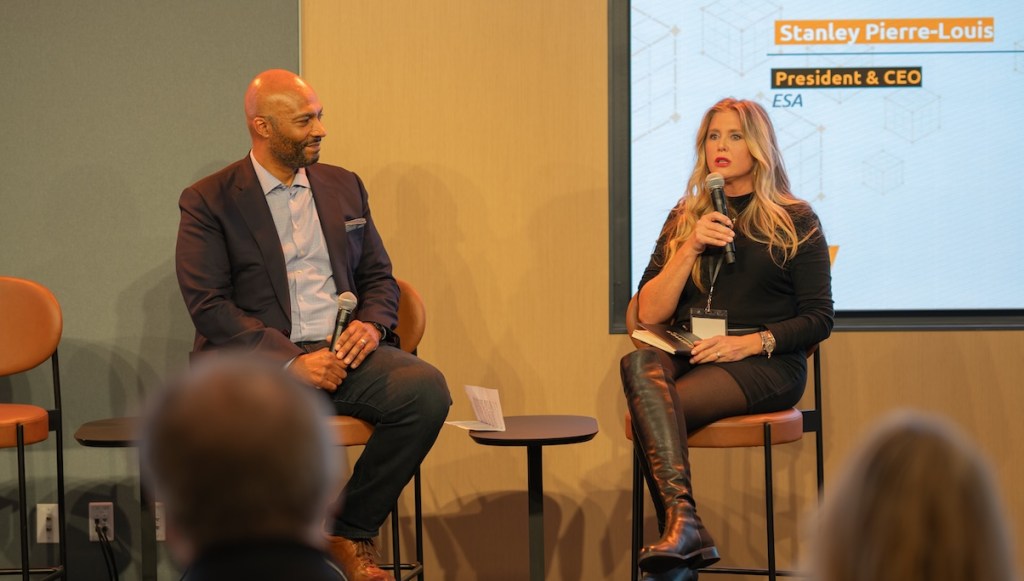
The goal of Amazon Games, the game publishing and development arm of Amazon, is to become a world-class top publisher in the game industry, says Laura Naviaux Sturr, GM, Operations, Amazon Games. The studio has launched three chart-topping titles so far: New World, Lost Ark, and Throne and Liberty.
At GameBeat Next, Naviaux Sturr spoke with Stanley Pierre-Louis, president and CEO, Entertainment Software Association (ESA), about the studio’s future portfolio and the ways its investments will come to bear over the next three years. That includes titles like the upcoming action brawler King of Meat and a new collaboration with Maverick Games on a future narrative-led, open-world driving adventure game, and big-swing investments in IP like Tomb Raider and The Lord of the Rings — and looking for breakout opportunities.
“The industry is at an inflection point right now,” she said. “We want to take two to three big bets a year and figure out the ones we can dial up a few notches. In our portfolio strategy, we need the blue chips with the dividends, some growth opportunities and engines and then taking some fun experimental bets. If you fast forward 10 years from now, what is Gen Alpha and Gen Z expecting from their gameplay experiences?”
Generating growth through IP
Media giants like Warner, Disney, and even Netflix are seeing great success exploiting their IP across media streams, and that’s a big part of the Amazon Games’ strategy. They’re all growing IP to take to transmedia, as well as leap at opportunities to secure established IP.
“Big IP will always matter, always carry with it this extraordinary fandom,” Naviaux Sturr said. “The big ones in the video game world are trying to get that commentary out of the depths of the internet into real-life experiences or through film and television or theme parks, like what you see with some of the very biggest video game IP. That’s an interesting vector in terms of finding new growth.”
For nascent video game IP, careful planning is crucial during the creation process, such as giving secondary characters potential for their own stories, considering what a prequel might entail, making sure the story could move throughout the timeline of your world in a compelling way and more.
“It’s more of the franchise planning at the outset that I’m seeing developers be very smart and strategic about. Look at how IP is being invented from the corners of the internet,” she said. “You have the Alexa Fund as an early investment vehicle at Amazon. We invested in a company called Superplastic. Their whole thesis was, how do we take Unreal and this ubiquitous technology that presumably will become very common, a skill set that a lot of developers have, and invent IP through social media?”
Demographics, attitudes and IP
In this year’s ESA study, “Essential Facts About the U.S. Video Game Industry,” they looked at Gen Alpha’s playing dynamics for the first time, and found that 79% percent play video games, with Gen Z’s numbers not far behind at 76% — a massive addressable market of people who love games. The average age of gamers is increasing over time, suggesting that more and more folks are lifelong gamers, playing not only new titles, but the titles they grew up with. Bringing those consumers along the journey of an IP they love requires some strategy, Naviaux Sturr says, which depends on the maturity of the franchise, consumer expectations and what the fans want.
With early-stage IP, there’s a lot more flexibility in the ways that you can expand and grow. But big IP holders like Roblox and Amazon Games, which see players across generations, have hard decisions ahead of them about how much player agency you’re going to allow this generation to have with your IP.
“In these user-generated worlds, micro-communities playing with a few people, watch parties — they expect to be able to have different rule sets and modify the game and do that in a way that feels very modern, seamless and easy,” she said. “For most of them, the common denominators are that they’re online, they play highly social experiences, and typically competitive ones, and some form of PvP (player vs. player). It’s my personal belief that this will still be their expectation 10, 20, 30 years from now.”
But she points at other statistics like the 53% of gamers who want single-player experiences. Addressing those consumers will require developers to challenge conventions: does every single-player game have to be 30 hours long, or have a single ending, and so on, and what will these games look like in the future?
“Our capital is always in terms of long-term value creation,” Naviaux Sturr said. “We’re taking that long view in making these stories, characters and narratives, and allowing them to come into these various spaces, whether through transmedia or the game itself, and telling new stories that wouldn’t have been possible otherwise.”
Science & Environment
Tesla was the top ‘Trump Trade’ of the week, along with some energy and financial stocks
Technology
How AI startup Conflixis is protecting hospitals from corrupt doctors

After a career as an incident investigator with risk management firms like Kroll and FTI Consulting, Aaron Narva was working with a big international bank client at compliance software maker Exiger. He was responsible for monitoring that client’s legal compliance after it had made headlines a decade earlier for a money-laundering scandal.
“While I was at Exiger, we acquired some software businesses, including an AI software tool that helped pull risk out of unstructured public records. And we built a tool to help identify corruption and sanctions risk in business relationships for very large companies,” Narva told TechCrunch.
That work gave him the idea for Conflixis. Hospitals and other big medical practices face similar risks from corruption as banks. Drug companies and device manufacturers get so famously chummy with doctors that doctors are required to disclose conflicts of interest: junkets, consulting fees, sponsorship of research grants and the like.
Much research shows that those who get too chummy are more likely to prescribe those drugs and devices, whether they would produce better outcomes for the patient or not. The risk is so great that the government runs a database called OpenPaymentsData.com, where anyone can see conflict-of-interest disclosures.
Yet disclosing such conflicts doesn’t stop the problem, which puts hospitals at legal risk. A host of laws prohibit such behavior by doctors, everything from the Stark Law, to the Anti-Kickback Statute (AKS).
At the same time, commercial interests do need to work with physicians – the medical experts – to help them research new drugs and build devices. So not every interaction is forbidden.
Narva envisioned an AI-powered software-as-a-service that would identify for hospitals and big medical practices the actual situations that put the hospital – if not the patient – at risk.
“A big health system might have 200,000 relationships between its doctors and vendors and suppliers,” Narva said. “Which of those 200,000 relationships is impacting you from any one of like six risks?”
Risks range from running afoul of laws to unfavorable medical outcomes. The federal government also provides a database that publishes hospital quality-of-care information.
Narva called a friend he’d known since the eighth grade, Joseph Bergen, director of engineering at Buzzfeed at the time, to ask Bergen’s opinion of the idea. Bergen liked it so much, he quit his job and became a cofounder.
Conflixis works by ingesting data from OpenPaymentsData.com, the hospital’s procurement data, claims data, patient outcomes records, conflict-of-interest forms, other sources. It analyzes all conflict points to identify the ones that a hospital should investigate.
“Ok, we looked at all 5,000 or 10,000 relationships [and] here are the seven that you need to actually look at,” Narva describes as an example. “Like, we boiled the ocean and here are the seven.”
Conflixis takes it a step further and can also predict a hospital’s spending and suggest ways to reduce it. For instance, is the hospital buying a more expensive piece of equipment based on a recommendation from a doctor that has a relationship with that vendor, instead of a less expensive one?
“We can make it so that hospitals are reducing their regulatory risk significantly, increasing their trust and transparency with their patients, yes, but also making better operational decisions about what they’re buying,” he says.
Founded in 2023, the company already has a handful of clients with just under $5 million in revenue, Narva said. It just announced a $4.2 million seed round co-led by Lerer Hippeau (the fund founded by BuzzFeed’s former chairman Kenneth Lerer) and Origin Ventures, with mark vc, Springtime Ventures, and pre-seed investor Cretiv Capital participating.
Conflixis joins a crowded field of health industry compliance software companies like Compliatric and Symplr, alhough some are more focused on protecting patient data than on corruption and procurement.
Narva says what sets Conflixis apart is the way it has married its employees’ careers in investigative work with LLMs. It modified off-the-shelf models to look for patterns in the data based on “our backgrounds in transaction monitoring and corruption in big data investigations,” he says.
Technology
What a second Trump presidency means for tech

Now, the tech industry has wised up. Most CEOs have looked back at the last eight years of techlash and seemed to conclude that they should be as visibly apolitical as possible — though they’re happy to lobby behind the scenes. At the same time, some have gambled that being in Trump’s good graces would be beneficial — and that risk seems to have paid off. Meta CEO Mark Zuckerberg, who Trump has literally threatened to send to prison, praised the president-elect’s fist pump after the attempted assassination and has made nice with Republicans about Meta’s content moderation choices. Amazon founder and Washington Post owner Jeff Bezos killed an endorsement of Kamala Harris in the paper. And, of course, Tesla CEO and X owner Elon Musk has made himself one of Trump’s chief allies, securing a promise that he could run a “Department of Government Efficiency” (DOGE).
Trump, meanwhile, will have more power than ever — he’s rooted out former supporters who encouraged restraint during his first term, and key allies have sprawling plans for overhauling the administrative state.
All this to say, the next four years of tech policy will be unpredictable and erratic. But even as Trump tries to expand his authority, he’ll need support from the courts and Congress. These are the policies we’ll be tracking as Trump reassumes the presidency and what he could realistically do.
AI
A Trump presidency likely means a less constrained AI industry. Trump has promised to repeal the Biden administration’s AI executive order, which instructed agencies to create testing standards and guardrails to prevent AI from being used in discriminatory ways, like in allocating housing or determining legal outcomes in the criminal justice system. Trump previously signed his own executive order covering AI safety and standards, but it did not touch on discrimination. The second Trump administration will likely deprioritize AI discrimination safeguards and discourage the use of the Defense Production Act to require more transparency, something conservatives have characterized as government overreach.
AI policy is an area where Elon Musk will likely seek to exert his influence, assuming he and Trump remain on good terms. Musk runs xAI and has been critical of incumbent players like OpenAI — a firm he cofounded but later distanced himself from and sued. Musk has supported AI safety measures like California’s controversial and ultimately vetoed SB 1047, and he previously signed a call for a moratorium on major AI developments for safety reasons. But his focus on existential risks has been criticized by some AI researchers as a distraction from more immediate risks like discrimination.
AI policy is an area where Musk will likely seek to exert his influence
It’s also not yet clear how Trump will handle thorny copyright issues surrounding generative AI, including what information large language models are allowed to train on. AI executives, including Musk, could seek to shape how Trump views the issue in a way that’s favorable to them.
Antitrust
Trump’s approach to antitrust enforcement could be based mainly on personal grievances. Bloomberg Intelligence senior litigation analyst Jennifer Rie writes that “enforcement could be idiosyncratic based on president-elect Donald Trump’s view of the companies or industries involved.” Adam Kovacevich, CEO of the left-of-center tech industry group Chamber of Progress, bluntly said we’ll see a “‘Trump Welfare Standard’: is this company nice to Trump?”
Though Trump’s VP pick, JD Vance, has publicly praised Federal Trade Commission Chair Lina Khan, it’s not clear how committed Vance is to this stance or how much sway he will have. If he does get a say here, we could expect a continued crackdown on big tech firms to benefit “little tech” or startups that VCs like Andreessen Horowitz (another Trump supporter) want to see rocket with growth.
“Republicans no longer uniformly lean more business-friendly than Democrats.”
While business leaders may be relieved if Khan leaves the FTC, Rie says we shouldn’t expect “a return to the relaxed antitrust climate of 10 years ago … some aspects of the current aggressive approach will stick. Republicans no longer uniformly lean more business-friendly than Democrats.” Still, while she says it largely depends on Trump’s appointments, merger approvals could become swifter and recently revised merger guidelines could be unraveled.
Trump’s administration will likely continue the existing legal fights against Meta, Google, Apple, and Amazon (including two cases filed during Trump’s first term). But it could pursue more modest remedies, depending on who he appoints — and how Trump feels about a company like Google on any given day. “A slight increase in settlement prospects is possible down the road, especially if the cases don’t seem to be going well for the agencies,” Rie writes. “Trump doesn’t believe Google should be broken up, though we didn’t expect this to happen anyway.” Kovacevich also says Trump could use the cases “as leverage over the companies to get favorable treatment on speech and content concerns.”
TikTok
Perhaps Trump’s greatest flip-flop issue has been his stance on TikTok. Trump championed the original TikTok ban effort, which was shot down by the courts. But he’s more recently said he opposes a ban because it would just benefit Meta. Trump’s turnaround reportedly came after he met with Republican donor Jeff Yass, who has a major stake in ByteDance.
Under the Biden administration, Congress overwhelmingly passed a bill that could ban the social video app unless ByteDance divests it by mid-January, and Biden signed it into law. The DC Circuit Court of Appeals is currently deliberating about whether that law can be upheld and will likely release a decision by the end of the year. But TikTok’s chances of dodging a ban only “slightly” improve under a Trump presidency, according to Bloomberg Intelligence litigation analyst Matt Schettenhelm.
The law doesn’t give Trump “much room” to play with
If the DC Circuit decides to uphold the law and the Supreme Court declines to take it up or upholds that ruling, what Trump can do is somewhat limited. He could grant an extension of up to 90 days for ByteDance to complete its divestiture of TikTok, but under the law, he would need to certify to Congress that there’s an actual plan underway. The law does leave the president some discretion to determine whether more apps besides TikTok fall under the divestiture law’s purview and what represents an adequate separation. But TikTok is written into the statute, so Trump can’t just decide it no longer applies.
The law doesn’t give Trump “much room” to play with, Schettenhelm tells The Verge in an email, though he could exercise some judgment in approving TikTok’s divestiture proposal. Even if Trump took the “unusual” step of announcing his Justice Department wouldn’t enforce the law, Schettenhelm writes in a note to clients, “companies that carry the app would be undertaking enormous risk that Trump wouldn’t change his mind and seek crippling penalties. We doubt they’d do so.”
If the court strikes down the law — perhaps because it finds it violates the First Amendment or because Congress didn’t develop a strong enough record in the relatively quick lead-up to its passage — then the legislature would need to do the process over. While the bill had very strong bipartisan support the first time around, now that Trump has said he opposes a TikTok ban, it seems less likely Congress would spend valuable time on a bill that the president may not sign.
Tariffs and China
Trump famously started a trade war with China in his first term in office, and if his campaign rhetoric is to be believed, we’ll see a continuation of such economic policies this time. While Biden has implemented some protectionist economic policies, including export controls on advanced semiconductors, Trump has floated tariffs on goods imported from China at a rate of 60 to 100 percent.
That could have big implications for the many tech companies that use components made in China and for any companies that rely on China for a significant part of their business strategy (like Apple and Tesla). But because of that connection, this is another area where Elon Musk’s influence could be a wild card.
Alongside his promises of mass deportations, Trump’s China tariffs could dramatically change day-to-day life in America, as severe price hikes for imported goods would throw countless people’s lives and livelihoods into chaos. How far the administration will go is an open question, and one that makes predicting the future with any certainty — inside and outside the tech industry — difficult to do.
Net neutrality and telecom policy
Net neutrality — which already faces an uphill battle in the courts after SCOTUS rolled back Chevron deference — is likely dead under a Trump administration. Bloomberg Intelligence analyst Nathan Dean predicts a 90 percent chance Trump’s Federal Communications Commission abandons the effort to reclassify broadband providers as common carriers and subject them to greater regulatory scrutiny.
A Republican-led FCC will also likely allow more concentrated control of TV stations, Dean writes, and loosen broadcast merger and acquisition rules. Republican FCC commissioner Brendan Carr, who served during the first Trump administration, has called for big tech companies to pay into the Universal Service Fund — currently funded by telecommunications providers — and suggested punishing TV networks under broadcasting rules.
Musk could seek to limit programs that help Starlink’s competitors
It’s not totally clear yet how Trump’s FCC will handle other key broadband policy issues, including the rollout of the government’s Broadband Equity, Access, and Deployment (BEAD) infrastructure investment program. But once again, Elon Musk’s influence could become important here. Musk runs the satellite internet company Starlink, which has been passed over for some government contracts, but could lobby for more favorable policies under Trump. For example, the BEAD program currently favors fiber broadband, and Musk has critiqued the program as an “outrageous waste of taxpayer money.”
In his government efficiency role or in a more informal way, Musk could seek to limit programs that help Starlink’s competitors, like the Universal Service Fund, according to CNET. That program helps service rural communities with broadband — places where Starlink is well positioned to move in.
Content moderation
Conservatives including Trump have long complained about social media platforms suppressing conservative speech and accused them of bowing to Democratic government pressure to remove things like election or vaccine misinformation. Even before his reelection, platforms like Meta had heeded Republican pushback and loosened their moderation standards.
A Trump administration and Republican legislature could rework the Section 230 liability shield to let them actually punish companies for moderation decisions. In addition to the option of passing actual laws changing Section 230, Brendan Carr suggested in his Project 2025 chapter that the FCC could narrow its protections for a broad range of content moderation decisions. Ultimately, any executive or legislative changes to online speech rules could face the Supreme Court, which has so far upheld the right to conduct content moderation, although it signaled openness to potential legal changes in the future.
Kids online safety
Trump hasn’t said much about where he stands on this topic or on the leading congressional bill on the subject, the Kids Online Safety Act (KOSA). That bill remains stalled in the House after passing through the Senate (in combination with an update to children’s data privacy law), and it’s not yet clear what could happen in future congressional sessions. Current Republican House leadership has expressed concerns that KOSA could unduly limit speech, so a Democratic House might be more open to giving it floor time, but ultimately, the concerns with the bill don’t fall entirely down partisan lines.
Adam Kovacevich, whose group has opposed KOSA, suggests Democrats should be wary of passing the bill under a Trump presidency — pointing to lead cosponsor Sen. Marsha Blackburn’s (R-TN) comments about protecting kids from transgender content online. “Democrats will have to decide whether they want to hand Trump & MAGA state law enforcers a powerful new censorship tool,” he writes.
Electric vehicles
Electric vehicle tax credits and other climate-focused policies will likely be in jeopardy under Trump, though that might be somewhat complicated by his connection with Musk, with Tesla standing to gain from EV-friendly policies. Still, Wedbush analyst Dan Ives previously said that Tesla’s “scale and scope … could give Musk and Tesla a clear competitive advantage in a non-EV subsidy environment.”
Tesla’s “scale and scope … could give Musk and Tesla a clear competitive advantage in a non-EV subsidy environment”
Bloomberg Intelligence analyst Nathan Dean sees just a 30 percent chance of continued EV tax credits under Trump. He predicts continued rhetoric that EVs are “a boon to China’s economy,” alongside efforts to replace the tax credits with consumer incentives that could benefit traditional carmakers like General Motors, Ford, and Stellantis.
Semiconductor policy
Under the Biden administration, Congress passed the bipartisan CHIPS and Science Act, which injected funds into creating a domestic semiconductor production industry — something experts say is a national security necessity and critical to maintaining control over the supply chain for important technologies including medical tech. But Trump called the bill “so bad” during his appearance on Joe Rogan’s podcast, and soon after, House Speaker Mike Johnson (R-LA) said he was open to repealing the law (though he later walked back those comments). Trump can’t undo a law on his own, but he could perhaps instruct his Commerce Department to slow-walk aspects of its rollout.
Crypto
Trump has made significant overtures to the cryptocurrency industry, headlining a major Bitcoin conference this summer and picking up significant support from prominent crypto investors like Marc Andreessen and Ben Horowitz. With Trump’s election, the industry is likely to get its top wish: the ouster of Securities and Exchange Commission Chair Gary Gensler, whom the industry views as its chief antagonist. Expect more permissive and hands-off regulation of this industry, as Trump has called for making the US a “Bitcoin superpower.”
Technology
Move over Steam Deck and forget the Switch 2 – the next-generation of handheld gaming PCs is almost here

- The OneXFly F1 Pro will be the first handheld gaming PC featuring AMD’s Ryzen AI 300 series APUs
- Multiple models will be available at the end of November 2024
- It’s expected to outperform the rumored Ryzen Z2 Extreme handheld gaming PCs
The handheld gaming PC market has been reignited ever since Valve released the Steam Deck – an affordable option for many gamers that inspired a new generation of rivals, including the likes of Asus’ powerful ROG Ally, and now the OneXFly F1 Pro ($1,099 / around £849 / around AU$1,660) is set to kickstart the next generation.
Using AMD’s Ryzen AI 370 and 365 APUs, OneNetbook’s F1 Pro will be the first ‘Strix Point’ APU for handheld gaming PCs as spotted by VideoCardz – they will be driven by AMD’s RDNA 3.5 architecture, which Team Red claims will improve performance and battery life. Both APUs will feature 12 Zen 5 cores and 24 threads, which could open the door for high-level performance on each model.
While we await Asus’ next move for a ROG Ally X successor (rumored to use the Ryzen Z2 Extreme APU), this will give a strong hint at what the next-gen could look like performance-wise for Strix Point handheld gaming PCs. It’s also important to note that it’ll start at $1,099 with 32GB of RAM (up to 64GB depending on the model), which is becoming a system requirement for optimal performance and visuals in many games such as Returnal.
As well as the strong APU specifications, the F1 Pro will utilize a 1080p OLED display providing direct competition to Valve’s Steam Deck OLED – though considering the Steam Deck OLED’s pricing ($549 / £479 / AU$899), it will more than likely remain a more popular option despite its weaker performance.
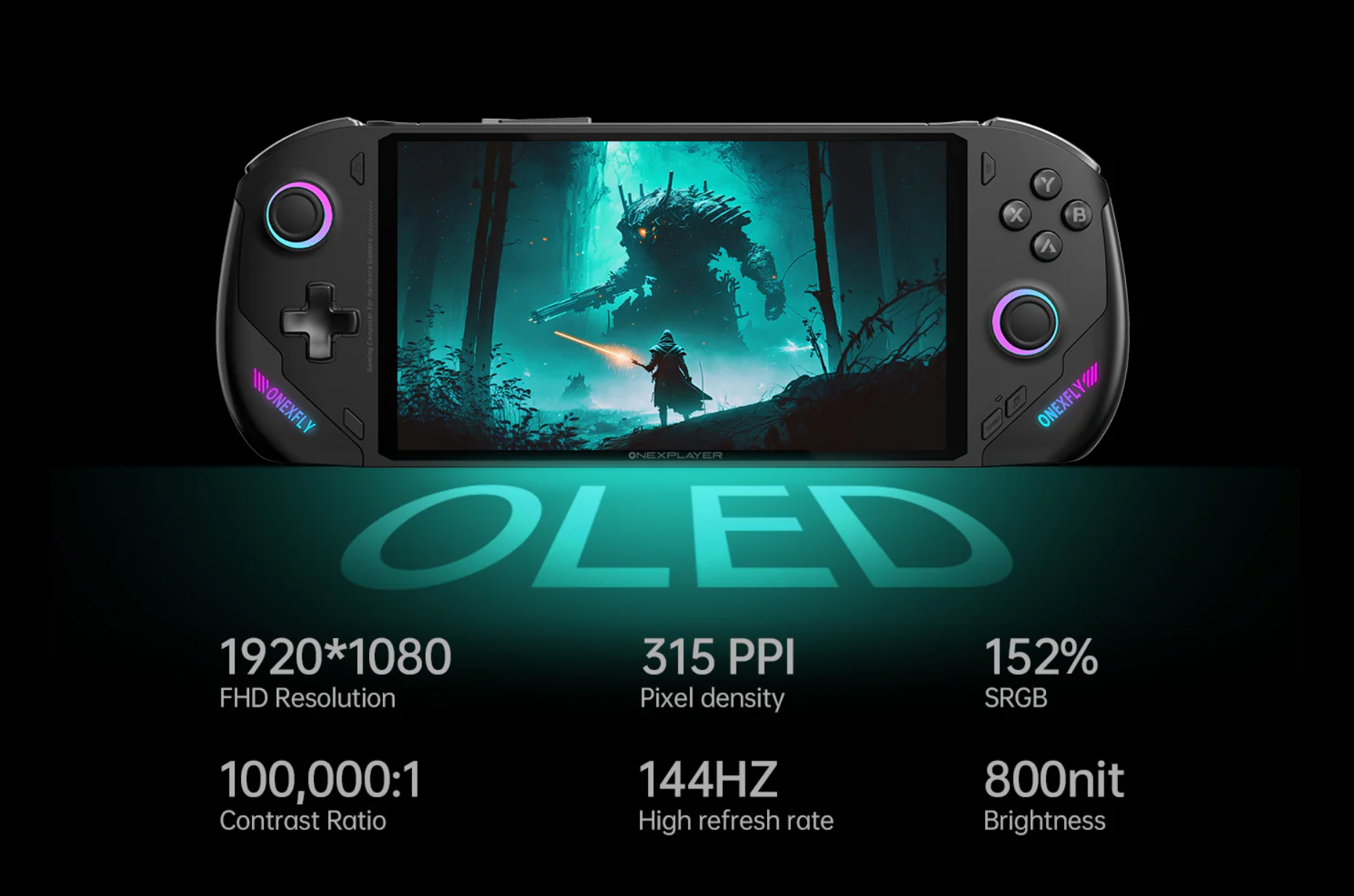
Can the OneXFly F1 Pro compete with other handheld gaming PCs?
Without a doubt, the OneXFly F1 Pro will outperform current handheld gaming PCs from Valve, Asus, and Lenovo, thanks to the Ryzen AI 300 series APUs. Now, there’s no confirmation from other handheld makers (including the Nintendo Switch 2’s reveal or release date), but rumors suggest both Lenovo and Asus will use the Ryzen Z2 Extreme APU in future handhelds.
Despite the Ryzen Z2 Extreme APU being anticipated to be the weaker Strix Point silicon chip compared to the Ryzen AI 370 and 365 (according to leaks), AMD claims RDNA 3.5 could improve battery life which was a weak point for the Z1 Extreme Ally (fortunately, ROG Ally X’s battery is much better as mentioned in our review).
While this new handheld arms race is exciting, pricing could still be the deciding factor for most gamers. There are currently no reviews on OneNetbook’s new handheld gaming PC, so we will have to wait and see how it fares in terms of battery life and fan performance (cooling) – as well as overall value for money, which could really determine if it will be able to beat the Steam Deck or Nintendo Switch 2.
You might also like…
Technology
The OnePlus Open renewed my faith in folding phones. Here’s why
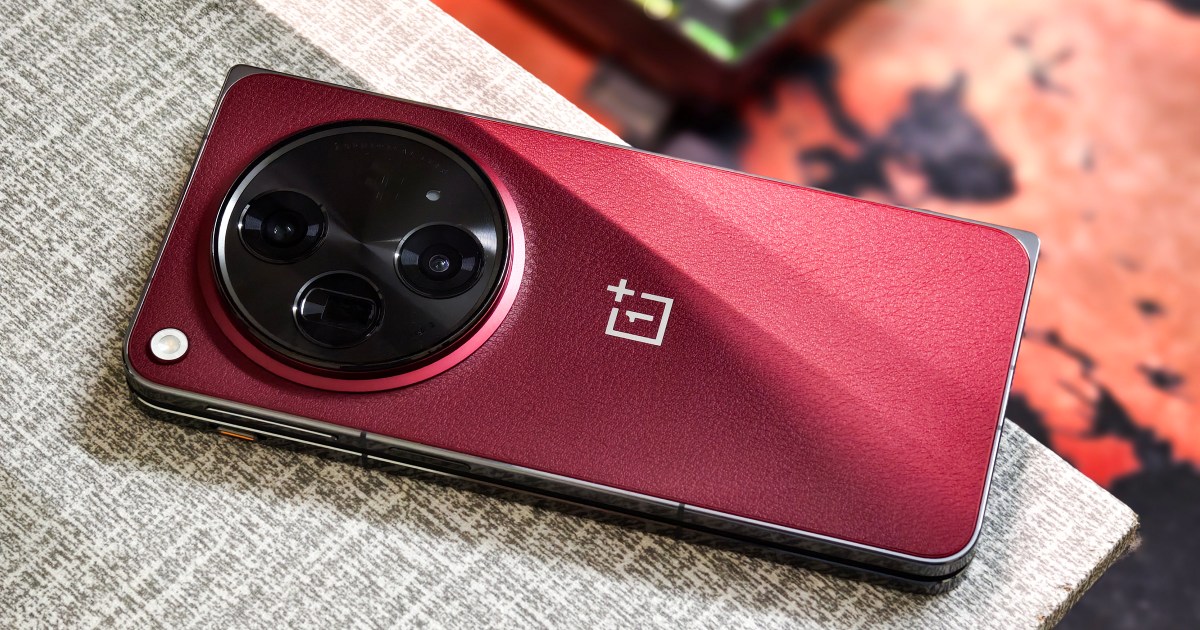
It’s never easy to recommend a foldable phone, especially when you consider the high asking price and the reports of hardware issues that keep eliciting long posts on Reddit. My personal experience also drives this reluctance, even though I’ve been using foldable phones consistently for half a decade now.
Early in 2023, the hinge on my Samsung Galaxy Z Fold 4 gave up. The phone would no longer open fully. A few days after the problem first manifested, I noticed a glue-like material oozing from the hinge gap.
I don’t remember it ever taking a nasty drop or even leaving my protective case since the setup day. Of course, I was disillusioned, and as our investigation later uncovered, there is no shortage of Samsung foldable enthusiasts feeling a similar sting in their wallets.
Soon after the bad experience, I switched to a OnePlus Open — and it made me a folding phone believer once again.
Standing out strong, literally

My Digital Trends colleague, Tushar Mehta, wrote a deep dive on the OnePlus Open Apex Edition’s design philosophy, and I recommend that you check that out for a primer. In real life, this phone will arrest your attention, all thanks to that red vegan leather that offers a striking contrast to the metallic luster on the frame and hinge.
The foldable phone trend in the industry is saturated with brands using all varieties of steel and aluminum, with some claiming military-grade durability. OnePlus followed in Apple’s footsteps, but took some metallurgical liberties of its own.
Where Apple used a titanium alloy frame tinged with aluminum and vanadium, OnePlus took a different exotic route. The company has used titanium alloy and cobalt molybdenum alloy as the primary framework material. The company claims the former is lighter and sturdier compared to the various strains of stainless steel found on most other smartphones.

OnePlus paid special attention to the phone’s most fragile element — the hinge assembly. The cobalt molybdenum alloy, for example, is touted to be four times stronger than surgical-grade stainless steel and far stronger than what rival foldable phones can claim.
The hinge spine plate, on the other hand, is made of a liquid metal derivative of amorphous zirconium alloy. In addition to raw material strength, it is said to offer high scratch and wear resistance. In a nutshell, the OnePlus Open is one of the most bewitchingly alluring phones out there, foldable or otherwise.
I could make an exception for the pink Pixel 9, but only to honor my colleague, Christine Romero-Chan, who also drove the Pro model in the same shade. The in-hand feel is fittingly fantastic on the Apex Edition. OnePlus nailed what one would call the “normal” look and feel of a regular phone. The Pixel Fold was just too wide, while Samsung’s Galaxy Fold still flaunts its tall aspect ratio anomaly.
A sigh of relief

On a personal note, however, the reality has been more pleasing than mere brand rhetoric. The OnePlus Open has taken more bumps than I can remember. Nearly half a dozen times, the phone has even received a nice slap or kick as I tried to catch it after it slipped from the table, a pocket, or my grip.
There are scars across the phone’s frame, retelling my clumsy ways. But more importantly, they serve as a lived-in retelling of just how resilient the phone is.

Cracked rear shell, broken camera lens cover, and the usual aftermath, a shattered screen. The situation has improved over the years, but those are mostly reserved for flagship phones treated with the latest from Corning or AGC Dragontrail.
The status quo of foldables is still tightly lodged in the “handle with care” class. And no, there is no escape route from the expensive repair costs. OnePlus will charge a cool $510 to fix issues with the inner foldable panel, while Samsung will require $549 to fix its latest Galaxy Z Fold 6. Repairs are expensive, but thankfully, the OnePlus Open has held up remarkably well.
A good phone no matter how you use it

The OnePlus Open is a very good phone, regardless of whether you keep your activities limited to the “normal” cover screen or make the most of its tablet-like inner foldable screen. As a journalist, nearly half my job entails reading reports and papers.
Ever since I started using foldable phones, I’ve almost entirely ditched the Kindle, or any other reader for that matter. The only scenario where I picked up another device — like the excellent Boox Palma – was because e-readers are far easier on the eyes.
Of course, watching videos is also a part of daily usage, but I am not particularly fond of pillarboxing, so there’s that. Binge-reading manga and comics? The OnePlus Open is perfect for it.

Another reason that the OnePlus Open has me hooked is the sheer joy of playing emulated games. Regardless of your taste in recreational digital content, the OLED screens (inside and outside) will serve you just fine. Hello, Dolby Vision support!
In fact, the Open Canvas system for running multiple apps side by side is still the best implementation of split-screen multitasking on a phone. Or a tablet. My colleague, Tushar, discovered his own niche utilitarian joy using the hands-free mode on the OnePlus Open.
The Qualcomm Snapdragon 8 Gen 2 powering the phone is still a mighty processor that can handle anything you would expect from a top-tier flagship phone. The phone’s triple-lens camera array is also quite powerful, and the results are good enough that I’ve never had second thoughts about picking it over the “Pro” iPhones.
Binge-reading manga and comics? The OnePlus Open is perfect for it.
There are many neat features to play with, but my favorite is the Hasselblad wizardry, which you can access in XPAN mode. It tries to replicate pictures in the 24x65mm format, a signature trait of the 1998 Hasselblad XPAN camera.
The black-and-white panoramic shots captured in the XPAN mode are totally worth the effort, and they inject some effortless artistic soul into any frame. Of course, not having to worry about the storage space running out on the Apex Edition is just the cherry on top.
What’s so special about the security?

The OnePlus Open continues the brand’s steady inroads into a tighter security experience for smartphone users. With OxygenOS 14 on the OnePlus Open, the company fortified security measures such as chip-level encryption, which is bundled together with another security measure within the Device Security Engine 3.0 package.
Earlier this year, OnePlus became the first Android smartphone maker to join the App Defense Alliance (ADA). The brainchild of Google, Meta, and Microsoft aims to protect Android phones from the scourge of malware through mobile applications and other emerging threats. At the moment, ADA operates under the Linux Foundation.

The OnePlus Apex Edition, specifically, carries that momentum further, thanks to a special VIP mode that offers enhanced security and privacy. Broadly, it accomplishes a couple of things. First, it disables mic and camera access across the system. Second, it restricts ad-tracking by using hardware-level encryption.
The enhanced security measures come to life courtesy of a dedicated security chip and a shielded NFC chip, both of which have been certified by Common Criteria for Information Technology Security Evaluation, which provides an industry standard for computing security.
This may not mean anything to some people, but for anyone who takes their smartphone security seriously, it’s a really nice touch — and yet another feather in the OnePlus Open’s cap.
A few not-so-nice things

Either $1,700 (or $1,900 for the Apex Edition) is no small sum, and certainly not for a phone. For any sane mind hoping to give OnePlus that kind of dough, they better commit to using it for at least a few years. This phone has adequate hardware to stay competent, but for how long exactly?
Unfortunately, OnePlus only promises upgrades through Android 17 for the OnePlus Open. For reference, Android 15 is now in the public domain. Consumer sentiments suggest that users seek longer update cycles on their phones. Market research firm Counterpoint says consumers are now holding on to their phones for longer.

For comparison, the Pixel 9 series will get OS for seven generations. Even the midrange OnePlus Nord 4 will eclipse the OnePlus Open in software updates. For OnePlus’ flagship foldable, and one that costs so much, longer software support would have been great to see.
Durability is next in line, which is even more pronounced in the case of foldable. The OnePlus foldable only offers IPX4-tier ingress protection, while Samsung’s Galaxy Z Fold 4 guarantees IP48-level dust and water shielding. I’ve used the OnePlus Open for a while now, and it hasn’t worried me with any kind of hardware factors, but accidents happen.
Then there is the omission of yet another crucial convenience — wireless charging. Now, I would take fast wired charging any day over wireless charging support. The OnePlus Open certainly scores an ace on that front, allowing 67-watt wired charging. In the retail box, you get an 80W charging brick, which is a convenient surprise.

But I must admit, the convenience of wireless charging has spoiled me, and there’s some practical rationale behind that, too. I only have access to so many ports on my work desk or the coffee shops I frequent. Plus, with each passing year, we are moving around with more accessories that need charging.
I have 3-in-1 wireless chargers in various shapes and sizes, but ultimately, they help me reduce the cable clutter and solve the port paucity problem. Almost every week, I have found myself placing the OnePlus Open on a wireless charging pad, only to realize that it was a vain effort.
The OnePlus Open is the real deal

Overall, the OnePlus Open has proved to be the most rewarding phone I’ve used in a while. It’s also the phone that has been my daily driver for the longest spell in my career. The Apex Edition just happens to the best execution, a real flex of form and functionality.
Once again, it isn’t exactly cheap, and neither is the standard version. But if you’ve ever wondered how well a foldable phone holds up in the long run, this is the one-year review to help guide your purchase decision.
The OnePlus Open has proved to be the most rewarding phone I’ve used in a while.
So, here are the key takeaways. The OnePlus Open is a fantastic foldable phone. If you’ve been on the fence regarding the durability aspect, this one survived a near-reckless in-hand journey.
I can’t say the same about many phones out there, and certainly not about foldable devices. I am not sure if the upcoming successor will be as good as the OnePlus Open, but if you are eyeing a Christmas treat for yourself, this one won’t disappoint you.
-

 Science & Environment2 months ago
Science & Environment2 months agoHow to unsnarl a tangle of threads, according to physics
-

 Technology1 month ago
Technology1 month agoIs sharing your smartphone PIN part of a healthy relationship?
-

 Science & Environment2 months ago
Science & Environment2 months agoHyperelastic gel is one of the stretchiest materials known to science
-

 Science & Environment2 months ago
Science & Environment2 months ago‘Running of the bulls’ festival crowds move like charged particles
-

 Technology2 months ago
Technology2 months agoWould-be reality TV contestants ‘not looking real’
-

 Science & Environment1 month ago
Science & Environment1 month agoX-rays reveal half-billion-year-old insect ancestor
-

 Sport1 month ago
Sport1 month agoAaron Ramsdale: Southampton goalkeeper left Arsenal for more game time
-

 Science & Environment2 months ago
Science & Environment2 months agoPhysicists have worked out how to melt any material
-

 Money1 month ago
Money1 month agoWetherspoons issues update on closures – see the full list of five still at risk and 26 gone for good
-

 MMA1 month ago
MMA1 month ago‘Dirt decision’: Conor McGregor, pros react to Jose Aldo’s razor-thin loss at UFC 307
-

 Science & Environment2 months ago
Science & Environment2 months agoMaxwell’s demon charges quantum batteries inside of a quantum computer
-

 Science & Environment2 months ago
Science & Environment2 months agoSunlight-trapping device can generate temperatures over 1000°C
-

 Football1 month ago
Football1 month agoRangers & Celtic ready for first SWPL derby showdown
-

 News1 month ago
News1 month agoWoman who died of cancer ‘was misdiagnosed on phone call with GP’
-

 News1 month ago
News1 month ago‘Blacks for Trump’ and Pennsylvania progressives play for undecided voters
-

 Science & Environment2 months ago
Science & Environment2 months agoLaser helps turn an electron into a coil of mass and charge
-
Business1 month ago
how UniCredit built its Commerzbank stake
-

 Technology1 month ago
Technology1 month agoUkraine is using AI to manage the removal of Russian landmines
-

 Science & Environment2 months ago
Science & Environment2 months agoA new kind of experiment at the Large Hadron Collider could unravel quantum reality
-

 Science & Environment2 months ago
Science & Environment2 months agoLiquid crystals could improve quantum communication devices
-

 Technology1 month ago
Technology1 month agoGmail gets redesigned summary cards with more data & features
-

 Technology1 month ago
Technology1 month agoSamsung Passkeys will work with Samsung’s smart home devices
-

 Science & Environment2 months ago
Science & Environment2 months agoWhy this is a golden age for life to thrive across the universe
-

 Sport1 month ago
Sport1 month agoBoxing: World champion Nick Ball set for Liverpool homecoming against Ronny Rios
-

 Technology1 month ago
Technology1 month agoEpic Games CEO Tim Sweeney renews blast at ‘gatekeeper’ platform owners
-

 Sport1 month ago
Sport1 month ago2024 ICC Women’s T20 World Cup: Pakistan beat Sri Lanka
-

 Science & Environment2 months ago
Science & Environment2 months agoQuantum ‘supersolid’ matter stirred using magnets
-

 Technology1 month ago
Technology1 month agoRussia is building ground-based kamikaze robots out of old hoverboards
-

 News1 month ago
News1 month agoMassive blasts in Beirut after renewed Israeli air strikes
-

 Entertainment1 month ago
Entertainment1 month agoBruce Springsteen endorses Harris, calls Trump “most dangerous candidate for president in my lifetime”
-

 MMA1 month ago
MMA1 month agoDana White’s Contender Series 74 recap, analysis, winner grades
-

 News1 month ago
News1 month agoNavigating the News Void: Opportunities for Revitalization
-
Business1 month ago
Top shale boss says US ‘unusually vulnerable’ to Middle East oil shock
-

 Technology1 month ago
Technology1 month agoMicrosoft just dropped Drasi, and it could change how we handle big data
-

 MMA1 month ago
MMA1 month agoPereira vs. Rountree prediction: Champ chases legend status
-

 MMA1 month ago
MMA1 month ago‘Uncrowned queen’ Kayla Harrison tastes blood, wants UFC title run
-

 Technology1 month ago
Technology1 month agoMicrophone made of atom-thick graphene could be used in smartphones
-

 Technology1 month ago
Technology1 month agoSingleStore’s BryteFlow acquisition targets data integration
-

 Technology1 month ago
Technology1 month agoCheck, Remote, and Gusto discuss the future of work at Disrupt 2024
-

 Sport1 month ago
Sport1 month agoWXV1: Canada 21-8 Ireland – Hosts make it two wins from two
-

 News1 month ago
News1 month agoRwanda restricts funeral sizes following outbreak
-

 Business1 month ago
Business1 month agoWater companies ‘failing to address customers’ concerns’
-

 TV1 month ago
TV1 month agoসারাদেশে দিনব্যাপী বৃষ্টির পূর্বাভাস; সমুদ্রবন্দরে ৩ নম্বর সংকেত | Weather Today | Jamuna TV
-

 Science & Environment2 months ago
Science & Environment2 months agoQuantum forces used to automatically assemble tiny device
-

 Technology1 month ago
Technology1 month agoWhy Machines Learn: A clever primer makes sense of what makes AI possible
-

 News2 months ago
News2 months ago▶️ Hamas in the West Bank: Rising Support and Deadly Attacks You Might Not Know About
-

 Technology2 months ago
Technology2 months agoMeta has a major opportunity to win the AI hardware race
-

 News1 month ago
News1 month agoCornell is about to deport a student over Palestine activism
-

 Business1 month ago
Business1 month agoWhen to tip and when not to tip
-

 MMA1 month ago
MMA1 month agoKayla Harrison gets involved in nasty war of words with Julianna Pena and Ketlen Vieira
-

 News1 month ago
News1 month agoHull KR 10-8 Warrington Wolves – Robins reach first Super League Grand Final
-

 Science & Environment2 months ago
Science & Environment2 months agoITER: Is the world’s biggest fusion experiment dead after new delay to 2035?
-

 Science & Environment2 months ago
Science & Environment2 months agoNuclear fusion experiment overcomes two key operating hurdles
-

 Football1 month ago
Football1 month ago'Rangers outclassed and outplayed as Hearts stop rot'
-

 MMA1 month ago
MMA1 month agoPennington vs. Peña pick: Can ex-champ recapture title?
-

 Technology1 month ago
Technology1 month agoLG C4 OLED smart TVs hit record-low prices ahead of Prime Day
-
Travel1 month ago
World of Hyatt welcomes iconic lifestyle brand in latest partnership
-

 Sport1 month ago
Sport1 month agoShanghai Masters: Jannik Sinner and Carlos Alcaraz win openers
-

 Science & Environment2 months ago
Science & Environment2 months agoA slight curve helps rocks make the biggest splash
-

 Technology1 month ago
Technology1 month agoUniversity examiners fail to spot ChatGPT answers in real-world test
-

 Sport1 month ago
Sport1 month agoPremiership Women’s Rugby: Exeter Chiefs boss unhappy with WXV clash
-

 News1 month ago
News1 month ago▶ Hamas Spent $1B on Tunnels Instead of Investing in a Future for Gaza’s People
-

 Sport1 month ago
Sport1 month agoChina Open: Carlos Alcaraz recovers to beat Jannik Sinner in dramatic final
-

 Football1 month ago
Football1 month agoWhy does Prince William support Aston Villa?
-

 Money1 month ago
Money1 month agoTiny clue on edge of £1 coin that makes it worth 2500 times its face value – do you have one lurking in your change?
-

 Science & Environment2 months ago
Science & Environment2 months agoNerve fibres in the brain could generate quantum entanglement
-

 Womens Workouts2 months ago
Womens Workouts2 months ago3 Day Full Body Women’s Dumbbell Only Workout
-

 Technology1 month ago
Technology1 month agoMusk faces SEC questions over X takeover
-

 Sport1 month ago
Sport1 month agoSturm Graz: How Austrians ended Red Bull’s title dominance
-

 Sport1 month ago
Sport1 month agoURC: Munster 23-0 Ospreys – hosts enjoy second win of season
-

 Sport1 month ago
Sport1 month agoCoco Gauff stages superb comeback to reach China Open final
-
Business1 month ago
Bank of England warns of ‘future stress’ from hedge fund bets against US Treasuries
-

 Technology1 month ago
Technology1 month agoQuoroom acquires Investory to scale up its capital-raising platform for startups
-
Business1 month ago
Italy seeks to raise more windfall taxes from companies
-

 MMA1 month ago
MMA1 month ago‘I was fighting on automatic pilot’ at UFC 306
-

 MMA1 month ago
MMA1 month agoHow to watch Salt Lake City title fights, lineup, odds, more
-

 TV1 month ago
TV1 month agoTV Patrol Express September 26, 2024
-

 News1 month ago
News1 month agoGerman Car Company Declares Bankruptcy – 200 Employees Lose Their Jobs
-

 News1 month ago
News1 month agoHarry vs Sun publisher: ‘Two obdurate but well-resourced armies’
-

 Sport1 month ago
Sport1 month agoNew Zealand v England in WXV: Black Ferns not ‘invincible’ before game
-

 Sport1 month ago
Sport1 month agoWales fall to second loss of WXV against Italy
-

 Science & Environment2 months ago
Science & Environment2 months agoTime travel sci-fi novel is a rip-roaringly good thought experiment
-

 Science & Environment2 months ago
Science & Environment2 months agoHow to wrap your mind around the real multiverse
-

 News2 months ago
News2 months ago▶️ Media Bias: How They Spin Attack on Hezbollah and Ignore the Reality
-
Business1 month ago
DoJ accuses Donald Trump of ‘private criminal effort’ to overturn 2020 election
-

 Technology1 month ago
Technology1 month agoJ.B. Hunt and UP.Labs launch venture lab to build logistics startups
-

 Technology1 month ago
Technology1 month agoAmazon’s Ring just doubled the price of its alarm monitoring service for grandfathered customers
-
Business1 month ago
Sterling slides after Bailey says BoE could be ‘a bit more aggressive’ on rates
-
Business1 month ago
‘Let’s be more normal’ — and rival Tory strategies
-

 Technology1 month ago
Technology1 month agoThe best shows on Max (formerly HBO Max) right now
-

 Technology4 weeks ago
Technology4 weeks agoNintendo’s latest hardware is not the Switch 2
-

 Football1 month ago
Football1 month agoFifa to investigate alleged rule breaches by Israel Football Association
-
Business1 month ago
The search for Japan’s ‘lost’ art
-

 MMA1 month ago
MMA1 month agoKetlen Vieira vs. Kayla Harrison pick, start time, odds: UFC 307
-

 Technology1 month ago
Technology1 month agoIf you’ve ever considered smart glasses, this Amazon deal is for you
-

 News1 month ago
News1 month agoTrump returns to Pennsylvania for rally at site of assassination attempt
-

 MMA1 month ago
MMA1 month agoKevin Holland suffers injury vs. Roman Dolidze
-

 Sport1 month ago
Sport1 month agoAmerica’s Cup: Great Britain qualify for first time since 1964
-

 Sport1 month ago
Sport1 month agoFans say ‘Moyes is joking, right?’ after his bizarre interview about under-fire Man Utd manager Erik ten Hag goes viral
-
Politics1 month ago
‘The night of the living dead’: denial-fuelled Tory conference ends without direction | Conservative conference

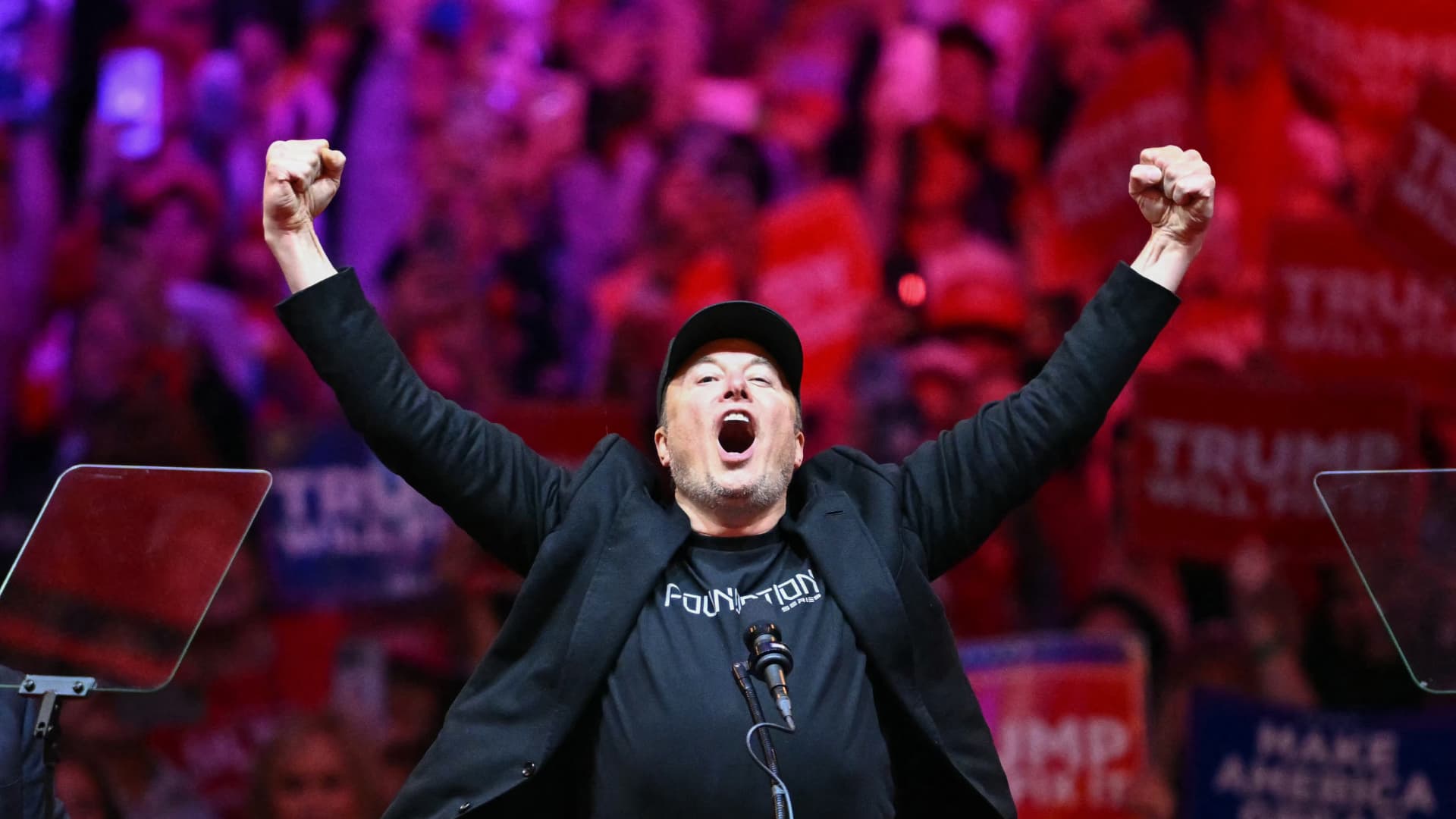
You must be logged in to post a comment Login